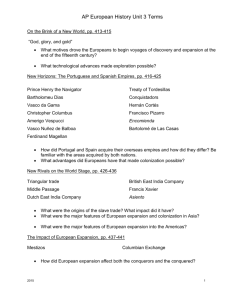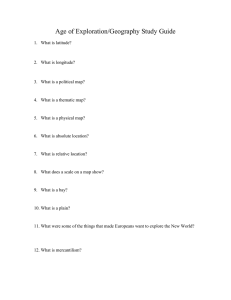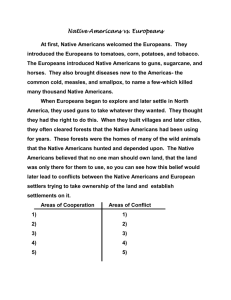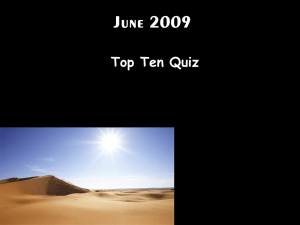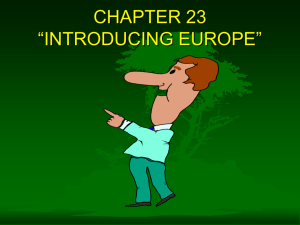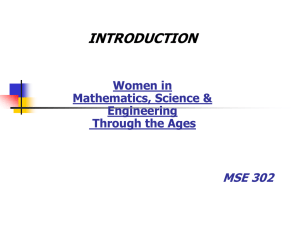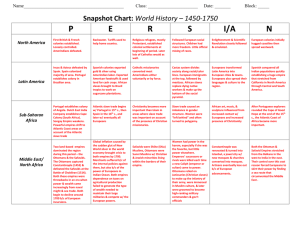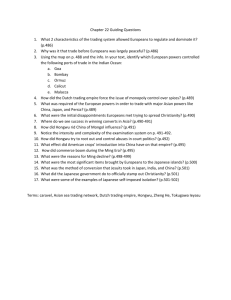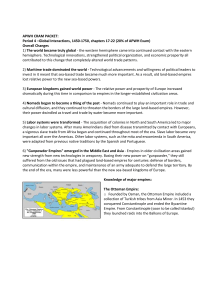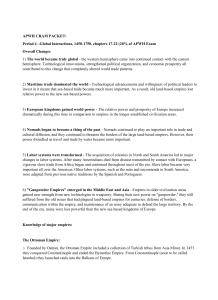GLOBAL VIEW ESSAY: How Did Changes in Western Europe Help
advertisement
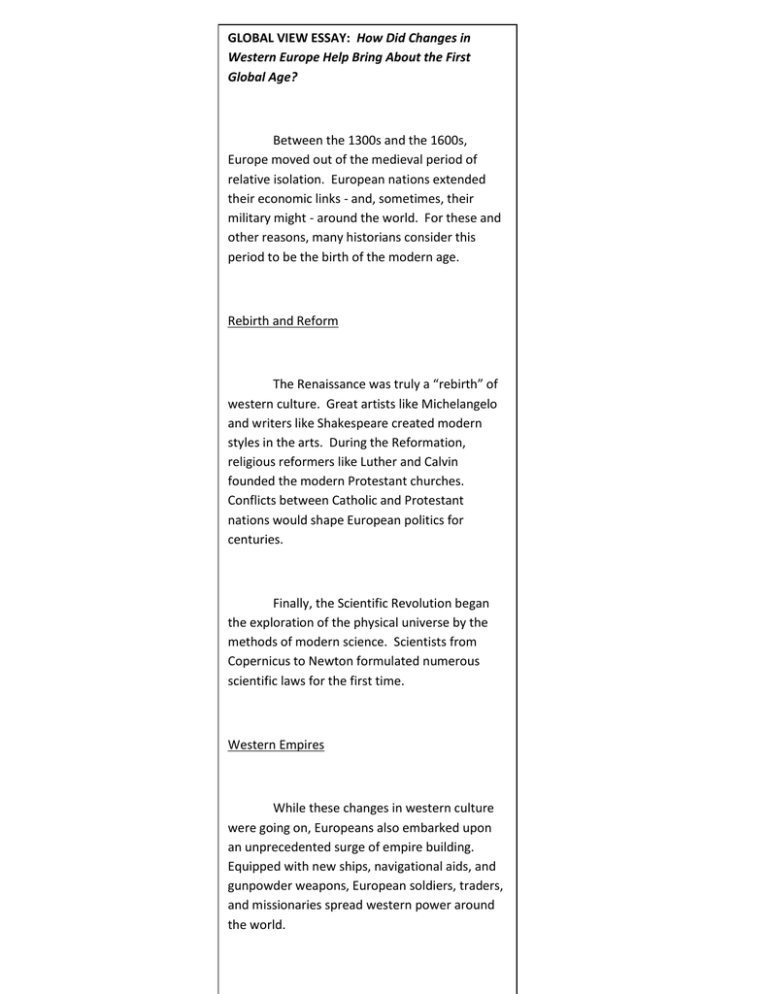
GLOBAL VIEW ESSAY: How Did Changes in Western Europe Help Bring About the First Global Age? Between the 1300s and the 1600s, Europe moved out of the medieval period of relative isolation. European nations extended their economic links - and, sometimes, their military might - around the world. For these and other reasons, many historians consider this period to be the birth of the modern age. Rebirth and Reform The Renaissance was truly a “rebirth” of western culture. Great artists like Michelangelo and writers like Shakespeare created modern styles in the arts. During the Reformation, religious reformers like Luther and Calvin founded the modern Protestant churches. Conflicts between Catholic and Protestant nations would shape European politics for centuries. Finally, the Scientific Revolution began the exploration of the physical universe by the methods of modern science. Scientists from Copernicus to Newton formulated numerous scientific laws for the first time. Western Empires While these changes in western culture were going on, Europeans also embarked upon an unprecedented surge of empire building. Equipped with new ships, navigational aids, and gunpowder weapons, European soldiers, traders, and missionaries spread western power around the world. The first target of European empire builders was Asia, Europe’s longtime trading partner. During the 1500s and 1600s, Europeans established scattered trading posts and colonies in India, Southeast Asia, and beyond. They brought back profitable cargoes of spices, silks, and other valuable Asian goods. At the same time, Europeans also established a presence in Africa and the Americas. Spanish conquistadors, followed by settlers from Portugal, the Netherlands, France, and England, conquered much of the so-called New World South America, the Caribbean islands, and North America. These colonists shipped home gold, silver, sugar, tobacco, and other commodities. Western people first settled on the coasts of Africa to establish way stations on the new sea route to Asia. To get laborers for their American plantations and mines, however, Europeans soon developed a brutal, but lucrative, trade in African slaves. The slave trade added very substantially to the working population of the Americas but cost Africa millions of human beings. Powerful Kings and Queens While these empires were growing overseas, the modern system of great powers was evolving in Europe itself. France became Europe’s power in the 1600s. Louis XIV, the “Sun King,” served as a model of absolute royal power. England in the 1600s, by contrast, provided an early example of more democratic rule as Parliament limited the power of monarchs. Farther east, three states - Austria, Prussia, and Russia - emerged as great modern powers in the 1700s. The Russia of Peter the Great and the Prussia of Frederick the Great particularly emphasized strong bureaucracies and armies as instruments of royal power. Looking Ahead All these trends and developments had great significance for the future. Reformed religion and Renaissance art would continue to shape the cultural experience of Europeans for centuries. The Scientific Revolution, combined with the later rise of industry, would give human beings unprecedented understanding of the world they lived in. The European great power system would build the empires and fight the wars of later centuries. Modern democratic and bureaucratic governments would grow from these early modern nation states. And the global connections first formed by European empire builders would evolve into the modern world, where people are linked by trade, travel, and international organizations.
